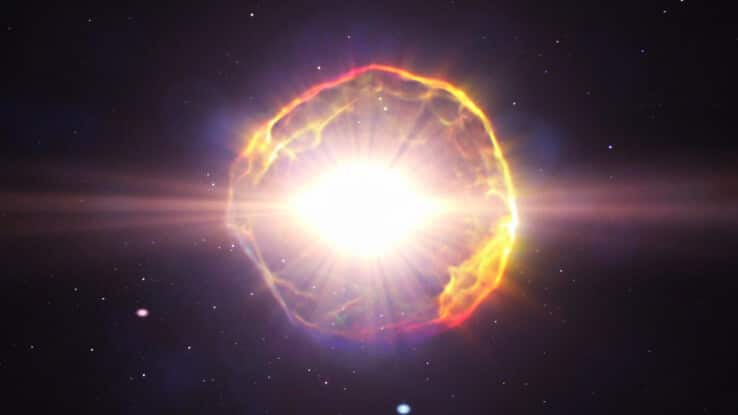
Watch: Rare celestial event to light up northern skies
What's the story
A unique celestial event is on the horizon, with a "new star," or nova, anticipated to grace our night sky. This star, T Coronae Borealis (T CrB), resides in the northern crown constellation and can be observed from the Northern Hemisphere, Australia, and New Zealand sometime before October this year. Typically too faint to see, T CrB erupts brightly approximately every 80 years due to its location 3,000 light years away.
Cosmic process
How does the phenomenon work?
T CrB is a white dwarf, a star that has exhausted its nuclear fuel and collapsed under gravity. It shares its space with a red giant, an aging star that has expanded significantly. The white dwarf absorbs gas from the red giant, forming an accretion disc around itself. This unique cosmic duo creates the conditions for T CrB's periodic eruptions into brilliance.
Stellar outburst
T CrB shines 1,500 times brighter during eruption
As the white dwarf accumulates matter, pressure and temperature rise, leading to a thermonuclear reaction on its surface. This causes T CrB to shine 1,500 times brighter than usual, briefly illuminating our night sky before expelling the gas and restarting the cycle. T CrB is part of a rare class of recurrent novae, that repeat within a hundred years, with only 10 such novae currently known.
Astronomical forecast
Predicting the eruption cycle of T CrB
The earliest known eruption of T CrB was recorded in a medieval monastic chronicle dating back to 1217. The star's eruptions can now be predicted with precision if it follows its usual pattern. The two most recent eruptions, in 1866 and 1946, displayed identical features. Notably, about 10 years before each eruption, T CrB's brightness increased slightly, followed by a short fading approximately a year before the explosion.
Stargazing alert
The event can happen over the next few months
T CrB entered its high state in 2015, and a pre-eruption dip was observed in March 2023, signaling the impending event. To witness this rare spectacle, stargazers are advised to familiarize themselves with the Corona Borealis constellation. The constellation is best viewed around 8:30pm to 9pm (local time) across Australia. Once it erupts, our window will be brief. The peak brightness will endure only a few hours. Within a week, T CrB will dim, requiring binoculars for observation.